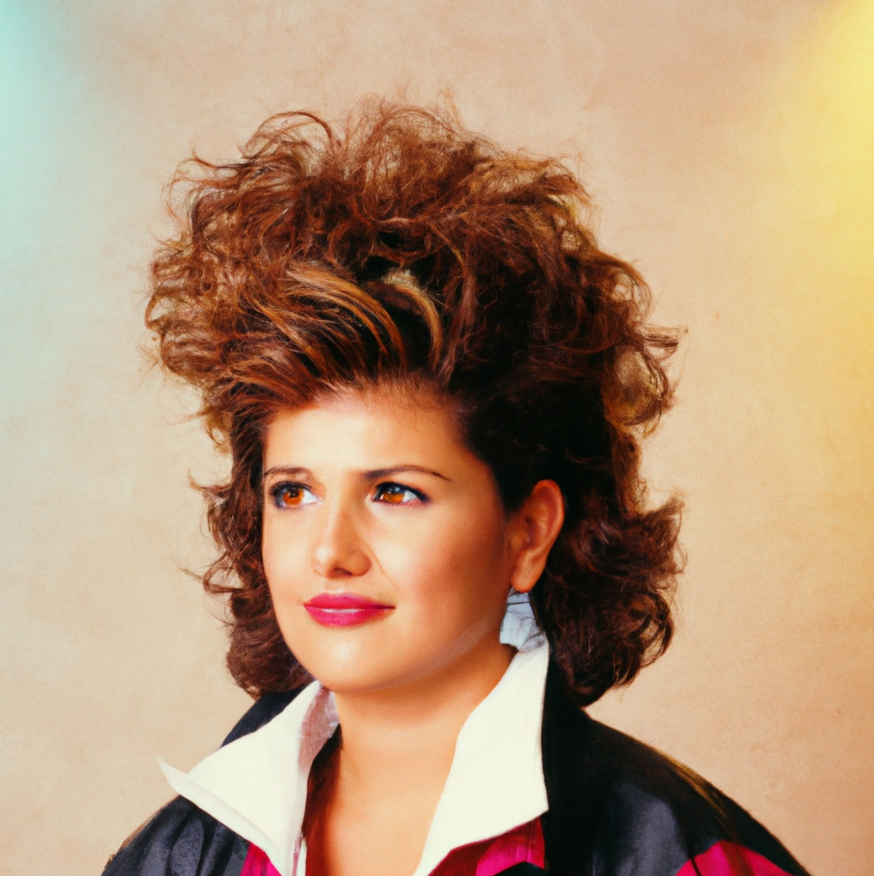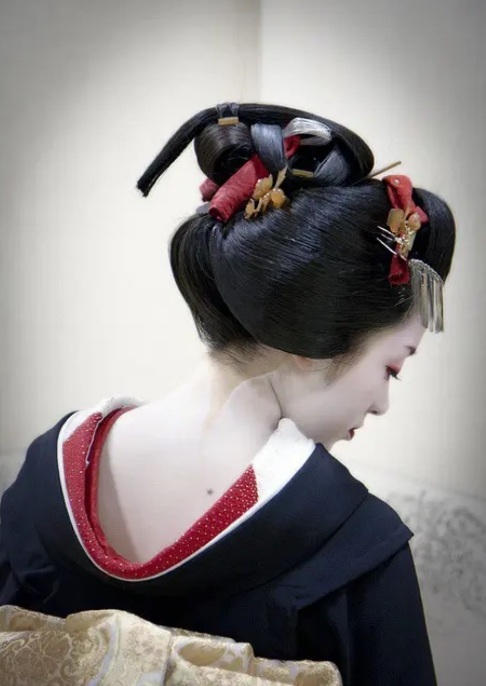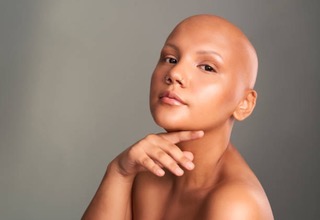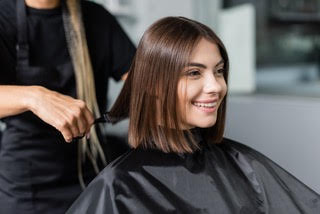
By Jill Lowe
Womens’s hairstyles for the last 100 years are well documented and illustrated and indeed are in the memories of many of us. We can consider the laquered finger waves of the 1920s flappers, the stiff French pleat of the 1950s, the perfectly coiffed hair of the 1960s when hairspray was all the rage, to the hair of today usually with an emphasis on movement.


Finger waves of the 20s and 30s

Clips to achieve the finger waves

Downton Abbey styles

Pin-up girl styles of the 40s
It’s clear that hair plays an important role in popular culture. Hair trends help to define each new generation and separate it from the one that came before. The 1950s saw drastic changes in hair styles as teenagers and young adults strove to break free of the previous, more conservative World War II era. Everything from rebelliousness to full-on glamour was embraced by movie stars and singers, and was reflected in new fashion and hair trends seen across the world.
A shampoo and set styling became popular from the 1930s.Washing the hair, applying setting lotion to the hair (sometimes beer) and placing the hair on hair rollers, and then drying it to set the shape of the hair into the chosen style, was prevalent for many decades. These styles required time in the salon under the helmet dryers, or for home use – the fabric helmet with the familiar ringed tube to keep the air flowing.
Women who used these time consuming styles were motivated to retain the look for as long as possible and almost certainly not doing any activity which would produce any perspiration. Perspiration, rain and wind were the enemy of these styles. Thus the use of the silk headscarf for wind and the plastic head scarf for rain. Avoiding exercise, rain and wind could prolong the shampoo and set for the week, until the next visit to the salon.
 |
 |

Photo courtesy Kate Wilson

The Queen too needed hairstyles to accommodate hats, tiaras and crowns, and her shampoo and sets were likely more often than weekly.
 |
 |

The beehive
Even as the 60s emerged, the teased, back-combed bouffant styles were imagined in many ways. Heavily lacquered sprayed hair with little movement was prevalent.
Then Vidal Sassoon changed everything!
Oh yes – there were others, but his name lives on. The British hairstylist’s creativity, looked at women’s hair completely differently and focused on movement.
The blow dry was the way forward. The whole idea was to get THE CUT and then one was freed from the shampoo and set.
Opening his first salon in 1954 in Bond Street London in the environment of the shampoo and set, he believed that with the right haircut, hair could move and be worn easily between haircuts, without the need for anything to hold it in place. It would fall naturally into the correct shape – “Material in Motion” and was easy to care for and versatile.
Citing the architecture of the Bauhaus – the german design school of the 1920s as his inspiration, Mary Quant, Grace Coddrington were some of the the first to use the hairstyles based on the architectural design principles. As Grace said “You could put your fingers through your hair!” Deceptively simple geometric cuts, he forged collaborations for 60 years with modernist fashion designers and Vidal Sassoon Salons are in major cities to-day across the world.
 |
 |


The geometric principles of Vidal Sassoon carried on but there were of course detractors and fashion variations, allowing the 80s hairstyles of big hair.

 |
 |
Today we have many variations especially in short hair with different colors and varying lengths.
 |
 |
Long hair has not gone out of fashion and also the coloring techniques have expanded.
Highlights, low lights are known but the newer terms of balayage and unicorn coloring are de rigeur in salons.
Balayage is the technique of free-hand painting highlights onto the hair, creating a soft and natural gradation of lightness towards the ends.

What is unicorn hair coloring?
Unicorns are mythical creatures, and in the same vein, Unicorn Hair Color is otherworldly. These hair color shades aren’t found in nature—rather, they span the fantastic realm of the color spectrum—pink, lilac, aqua, pistachio, buttercup. Tonally, they may range anywhere from the softest pastels to vivid and bright or even neon.

John Frieda’s Unicorn coloring
One might think that we had seen the end of rollers and hair equipment.
Oh No…. Of course not.
Now there are more and different rollers, curling irons, straightening irons, pomades, gels, brushes and sprays.
Too we are encouraged to sleep on silken pillow cases to preserve one’s coiffure.
Any manner of travel items are available for your perusal.
We should probably be thankful we need not have to manage our hair as a geisha.

Alopecia and wigs
Hair loss or hair thinning, whether from age, unknown causes, or chemicals in chemotherapy, is distressing for many.
Not many want to or can can pull off the totally bald look, though for some it is absolutely beautiful.
The wig industry is very big and with amazing quality and truly a life booster for many.
An overheard conversation on a New York bus last year.
Passenger A (on seeing passenger B get on the bus.)
“Oh Hi Barbara, I haven’t seen you for ages, you look amazing, I just love your hair, it is almost as if it is a wig!”
Passenger B “It is”
Passenger A “ Oh, you’d never know”

The long history of hairstyles is discussed in a new book Beyond Vanity by Elizabeth Block. She discusses how hairdressing and hairstyles claimed deep significance as a cultural site and meaning in the mid to late nineteenth centuries in the USA. Its misplaced association with frivolity and triviality is talked about and this book extracts the consequential ways hair contributed to the lived experiences of women be they slaves, or in workplaces in enslaver’s homes. The notion of hairdressing in the African-american population is included but also the ways the enslaved women had to manage their white enslaver’s hair.

The CROWN ACT was created in 2019 by DOVE and the CROWN Coalition, in partnership with then State Senator Holly J. Mitchell of California, to ensure protection against discrimination based on race-based hairstyles by extending statutory protection to hair texture and protective styles such as braids, locks, twists, and knots in the workplace and public schools.
It has passed in Illinois but there are outstanding states.


Meet April Showers ‘Afro Unicorn’ CEO
What started as a direct-to-consumer e-commerce business in 2019, today, Afro Unicorn® spans over 25 categories, including apparel, accessories, toys, consumables, books, bedding, hair care, and party supplies, available in over 40,000 stores. Making history with the May 2022 Walmart Launch across over 3,800 stores nationwide, Showers confidently leads the first black-owned, woman-founded business with a licensed character brand being carried in major
retail.

A final word from George Burns
Too bad all the people who know how to run this country are busy running taxicabs or cutting hair.
Notes and Links:
Photo of Jill by Joe Mazza, Bravelux inc.
Photos copyright © 2024 Jill Lowe. All rights reserved
Images from Shutterstock license






